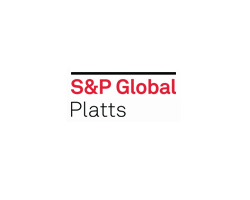Europe HRC Spread Narrows Further as Met Coal-Led Costs Pressure Operating Margins

November 2, 2023 - The spread between European hot-rolled coil steel and raw material prices narrowed further in October to a low last seen in mid-2020 driven by higher coking coal costs, pressuring blast furnace steel operating margins.
HRC prices declined in October to the lowest monthly level since November 2020, and with averages slipping for the sixth consecutive month, according to a Nov. 2 analysis by S&P Global Commodity Insights.
The Northwest Europe HRC steel-to-raw material spot spread narrowed to average around Eur261/mt ($277/mt) in October, from Eur305/mt in September, according to S&P Global estimates.
A regional steel mill's breakeven level may be considered at spreads of around Eur250-Eur300/mt, depending on specific individual sites and cost structures.
In October, the euro weakened to average $1.06 to the US dollar from $1.07 in September, boosting costs for dollar-denominated raw material imports.
Platts estimated the Northwest Europe HRC spread at an average of Eur345/mt in Q3, down from Eur470/mt in the second quarter and Eur421/mt in the first.
Spreads continue to move lower, in stark contrast to wider spreads seen in the first half of 2023, partly due to weak spot steel demand and orders weighing on spot prices for HRC, along with a longer-running elevated met coal cost input.
Northwest Europe HRC spreads this year have been narrower than the Eur520/mt average in 2022 and Eur636/mt in 2021. Several strong periods of steel pricing and demand were seen during the market's response to phases brought on by the pandemic in 2020-2022.
The Northwest European HRC spread remained well below a Eur858/mt peak reached in April 2022 at a time of record steel prices and operating profits at regional mills.
The EU steel industry's pig iron production in September remained weaker than a year earlier as output was affected by stoppages at blast furnaces undergoing maintenance, according to analysis using World Steel Association data.
S&P Global tracked inputs using major steel feedstock cost references, including a basket of iron ores with high-grade fines, lump and pellets typically consumed by regional blast furnaces in Germany, France and other regional EU markets.
HRC Prices
Platts assessed HRC prices at an average of Eur612.95/mt ex-works Ruhr in October, down 4% from September, and at Eur630/mt ex-works Ruhr Nov. 1, S&P Global data showed.
Iron ore import prices in China, used in global contracts, slipped in October to $118.91/dry mt CFR China for benchmark Platts IODEX 62% Fe fines, 1.6% below September's average.
Spreads between 62% Fe and 65% Fe fines widened over October to average $9.01/dmt, from $7.85/dmt a month earlier.
Spot lump ore premiums in China rose in October to 23.23 cents/dmtu on average. The lump premium was equivalent to about $14.52/dmt for the 62.5% Fe grade, up 30% from September.
Platts assessed the Atlantic blast furnace contract pellet premium in October at $38/dmt, down $12/dmt from September, based on premiums applied to 62% Fe fines index terms, S&P Global data showed. The assessed premium tracked settlements and price indications for Q4 contract premiums and pricing terms with spreads.
Coking coal prices on a delivered net forward basis into Rotterdam in October spiked 16.7% to $372.61/mt CFR NW Europe, based on transactions at higher prices, driven by some restocking in India after tighter spot availability for October and November loading premium mid-volatile cargoes favored by several end-users, including merchant coke plants.
The majority of HRC produced in Europe is from integrated mills using iron ore and blast furnace production, rather than typically lower emissions-intensive electric arc furnaces. Italy's Arvedi and ArcelorMittal's Sestao plant in Spain produce flat steel via EAFs, with limited EAF-based emissions reduced volumes from SSAB and Salzgitter also being offered in low volume.
Regional northern European shredded scrap prices slipped 2.16% to Eur340/mt on a delivered basis in October.
S&P Global's Europe HRC-to-raw-material price spreads are indicative operating margins that do not account for inland logistical costs, power, natural gas or other blast furnace and steelmaking inputs, such as ferroalloys, anodes and refractories. Costs to operate sintering and coke plants are not included.
Typical operating breakeven levels at regional blast furnace mills may see further pressure from higher energy, carbon permit and logistics costs.

